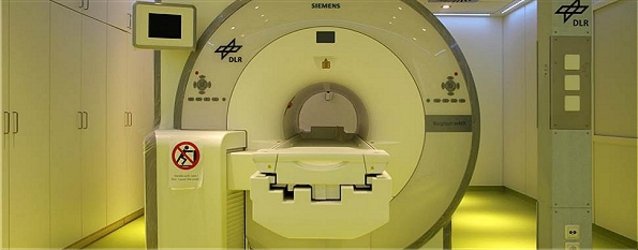Accept all cookies Accept only essential cookies See our Cookie Notice

About ESA
The European Space Agency (ESA) is Europe’s gateway to space. Its mission is to shape the development of Europe’s space capability and ensure that investment in space continues to deliver benefits to the citizens of Europe and the world.
Highlights
ESA - United space in Europe
This is ESA ESA facts Member States & Cooperating States Funding Director General Top management For Member State Delegations European vision European Space Policy ESA & EU Space Councils Responsibility & Sustainability Annual Report Calendar of meetings Corporate newsEstablishments & sites
ESA Headquarters ESA ESTEC ESA ESOC ESA ESRIN ESA EAC ESA ESAC Europe's Spaceport ESA ESEC ESA ECSAT Brussels Office Washington OfficeWorking with ESA
Business with ESA ESA Commercialisation Gateway Law at ESA Careers Cyber resilience at ESA IT at ESA Newsroom Partnerships Merchandising Licence Education Open Space Innovation Platform Integrity and Reporting Administrative Tribunal Health and SafetyMore about ESA
History ESA Historical Archives Exhibitions Publications Art & Culture ESA Merchandise Kids Diversity ESA Brand CentreLatest
Space in Member States
Find out more about space activities in our 23 Member States, and understand how ESA works together with their national agencies, institutions and organisations.
Science & Exploration
Exploring our Solar System and unlocking the secrets of the Universe
Go to topicAstronauts
Missions
Juice Euclid Webb Solar Orbiter BepiColombo Gaia ExoMars Cheops Exoplanet missions More missionsActivities
International Space Station Orion service module Gateway Concordia Caves & Pangaea BenefitsLatest
Space Safety
Protecting life and infrastructure on Earth and in orbit
Go to topicAsteroids
Asteroids and Planetary Defence Asteroid danger explained Flyeye telescope: asteroid detection Hera mission: asteroid deflection Near-Earth Object Coordination CentreSpace junk
About space debris Space debris by the numbers Space Environment Report In space refuelling, refurbishing and removingSafety from space
Clean Space ecodesign Zero Debris Technologies Space for Earth Supporting Sustainable DevelopmentLatest
Applications
Using space to benefit citizens and meet future challenges on Earth
Go to topicObserving the Earth
Observing the Earth Future EO Copernicus Meteorology Space for our climate Satellite missionsCommercialisation
ESA Commercialisation Gateway Open Space Innovation Platform Business Incubation ESA Space SolutionsLatest
Enabling & Support
Making space accessible and developing the technologies for the future
Go to topicBuilding missions
Space Engineering and Technology Test centre Laboratories Concurrent Design Facility Preparing for the future Shaping the Future Discovery and Preparation Advanced Concepts TeamSpace transportation
Space Transportation Ariane Vega Space Rider Future space transportation Boost! Europe's Spaceport Launches from Europe's Spaceport from 2012Latest

In bed for science
Thank you for liking
You have already liked this page, you can only like it once!
It might look like fun at first glance but it is not – bedrest participants spend months in bed as doctors take regular blood samples and continuous tests to chart how their body reacts to a sudden sedentary lifestyle.
This is not an exercise in laziness, however. Lying in beds tilted at 6° below the horizon, blood descends to the head and muscles and bones waste away from lack of use – researchers learn more about how astronauts’ bodies cope with living in space by monitoring these healthy volunteers during their horizontal ordeal.
This image was taken during the second campaign of a 60-day bedrest study being held at the German Aerospace Centre DLR's :envihab facility in Cologne, Germany. On behalf of ESA, DLR recruited 12 people who will take part in about 90 experiments to examine, among other things, insulin resistance, the cardiovascular system, how the brain copes with the head-down rest, and how effective simulated gravity affects specific organs.
The goal is to find ways to counteract symptoms of spaceflight, such as bone loss and changes in blood flow. This study will use a newly developed exercise device that allows subjects to ‘jump’ in a horizontal position using low-pressure cylinders to recreate gravity. The experiment targets bones, muscles and coordination.
The first campaign started in August 2015 with 12 volunteers and lasted until December. The second campaign began in January and will last until April, with a total of 24 test subjects.
ESA has a long history of bedrest studies with both men and women conducted in cooperation with DLR or the French centre at MEDES in Toulouse. Together with NASA, ESA is already preparing for its next study in 2017, also at :envihab, that will test a human centrifuge.
-
CREDIT
DLR (CC-BY) -
LICENCE
ESA Standard Licence

Reading during bedrest study

Bedrest

MRI scanner

In a spin















 Germany
Germany
 Austria
Austria
 Belgium
Belgium
 Denmark
Denmark
 Spain
Spain
 Estonia
Estonia
 Finland
Finland
 France
France
 Greece
Greece
 Hungary
Hungary
 Ireland
Ireland
 Italy
Italy
 Luxembourg
Luxembourg
 Norway
Norway
 The Netherlands
The Netherlands
 Poland
Poland
 Portugal
Portugal
 Czechia
Czechia
 Romania
Romania
 United Kingdom
United Kingdom
 Slovenia
Slovenia
 Sweden
Sweden
 Switzerland
Switzerland

























